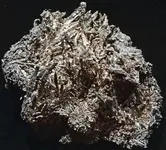There is a chapter in my book, about silver “dirty “bars.
About twenty miles south of my house, there was a pack train that was attacked in a creek crossing and a few mules were lost and silver lost.
Later on, down stream a few miles, a farmer was plowing a plot close to the creek. He hit several of these metallic bars and threw them into a pile.
Here is the link to this story...
This farmer was the father of a lady that my first partner knew when she was an elderly lady, and my partner was a young man.
He told me this story, that she had told him.
She had watched her father throwing the chunks of unknown material, and kicking the ground in frustration.
Here parents talked about it while eating supper, but she didn’t understand what it was about.
The next day a neighbor stopped by, on his way to town to see if they needed anything.
The man and her father talked then they went down to the creek and looked at the pile. They came up and took his wagon to the creek and loaded it up and they all went to town.
What she remembered most clearly was that she and the rest of the family got new shoes and brand new, Sunday clothes and Mom got a new cook stove.
My partner, Jim explained that the creek was in narrow banks where the old story about the silver was lost and that the farm was in the first open area for the water to loose speed and allow heavy objects to fall out of the flow during heavy flooding. So the bars were never going to be moved again by water.
The bars were not what we generally think of when we hear, silver bars.
They were made from low quality ore and poured into trenches carved into the ground, and when cooled they were pulled out and more were poured.
They were then shipped via pack mule , to another location to be purified and marked etc...
?? Were all of the parts of the story true and correct, that Jim told me

I have never had a reason to doubt him, and I have been his friend for most of my life.
I believe that your earlier posts seem to follow the same process and patterns.
#/;0{>~








